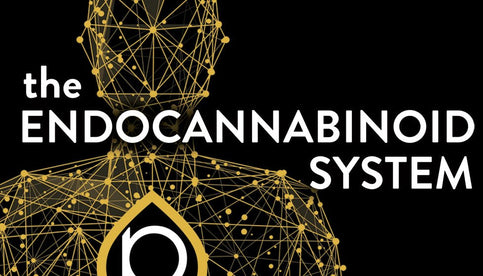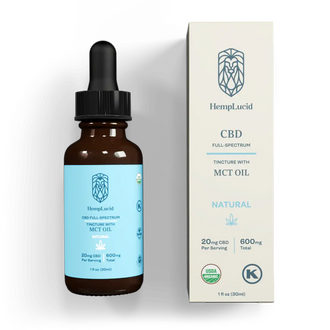
What is the Endocannabinoid System?
The endocannabinoid system (aka ECS) is a central focus when discussing the benefits of CBD and other cannabinoids. What is the ECS and what does it do?
The endocannabinoid system (aka the ECS) is a central focus when discussing CBD and other hemp-derived cannabinoids.
This widespread system plays a vital role in regulating essential body functions, but it wasn’t until the mid-90s that we even knew it existed.
To understand how the ECS works, it’s important to familiarize yourself with the concept of cannabinoids.
What Are Cannabinoids?
Cannabinoids are compounds found in the cannabis family of plants. These are called phytocannabinoids (phyto meaning “of a plant”).
The most studied phytocannabinoids are CBD (cannabidiol) and THC (tetrahydrocannabinol).
But did you know there are also naturally occurring cannabinoids inside of your body?
These are known as endocannabinoids (endo meaning “internal” or “within”). Endocannabinoids are a crucial part of bioregulation and are synthesized by the body to be used immediately.
Both types of cannabinoids are molecules that activate cannabinoid receptors within the endocannabinoid system.
Let’s get a quick breakdown of these cannabinoids.
Endocannabinoids
- Anandamide – low levels of this compound are naturally present in the body. Anandamide plays a role in the regulation of appetite and the generation of motivation and pleasure.
- 2-Arachidonoylglycerol (2-AG) – this endocannabinoid is present at much higher levels in the body. 2-AG binds primarily to CB2 receptors in the ECS (we’ll get to that).
Phytocannabinoids
- Cannabidiol (CBD) – a cannabinoid found in cannabis that indirectly affects the ECS by elevating endocannabinoids to interact with cannabinoid receptors in the body. Consistent CBD intake regulates the endocannabinoid system to work more efficiently toward reaching a physiological balance called homeostasis.
- Tetrahydrocannabinol (THC) – a better known psychoactive cannabinoid found in cannabis. THC has a strong binding affinity to cannabinoid receptors. This cannabinoid is responsible for producing the “high” associated with marijuana.
Discovering the Endocannabinoid System
The first cannabinoid receptor, known as CB1, was discovered in a rodent’s brain in 1988.
A second cannabinoid receptor, CB2, was identified in 1993. CB2 receptors are found throughout the immune system and peripheral tissues of the body.
After discovering these two receptors, researchers knew they were onto something. In 1995, CB1 and CB2 receptors were found in numerous other species, including humans.
Thanks to advancements in technology, researchers were finally able to identify a signaling system between phytocannabinoids and endocannabinoids dubbed the endocannabinoid system (ECS).
This amazing discovery revealed our bodies are naturally wired to interact with cannabinoids.
The ECS: An Overview
The endocannabinoid system plays a critical role in homeostasis (a balance of physiological processes) for all vertebrate species as it is widespread throughout the animal kingdom. The main components of the ECS are:
- Cannabinoid receptors – on the surface of cells.
- Endocannabinoids – naturally occurring molecules that activate cannabinoid receptors.
- Metabolic enzymes – break down endocannabinoids after use.
Cannabinoid Receptors
Found on the surface of the cell are cannabinoid receptors. Their job? To be aware of what is going on outside the cell and alert the inside of the cell of any change in conditions around it.
Once alerted, the cell engages the appropriate cellular response.
Though there are several cannabinoid receptors, the two most studied are the CB1 and CB2 receptors.
CB1 receptors are the most abundant receptor types in the brain. These are the receptors that interact with THC, the psychoactive chemical in cannabis, to produce the “high” effect.
CB2 receptors are more abundant outside of the nervous system, in places like the immune system. However, both receptors are found throughout the body.
Endocannabinoids
Anandamide and 2-AG, mentioned earlier, are endocannabinoids that are naturally synthesized by humans and animals alike.
The endocannabinoid anandamide—as well as its mimetic (meaning similar in structure) phytocannabinoid THC—binds primarily with CB1 receptors found in the brain and nervous system.
Fun Fact: Anandamide is called the “bliss molecule” and is named after the Sanskrit word ananda, meaning joy or bliss. Levels of anandamide increase during exercise and may be responsible for the “runner’s high” effect.
2-AG—and its mimetic phytocannabinoid CBD—is active at both CB1 and CB2 receptors.
Metabolic Enzymes
Metabolic enzymes are responsible for several cellular functions necessary for homeostasis and survival.
The enzymes are required for the growth of new cells. They maintain and repair tissues and organs within the body. Metabolic enzymes also process fat, protein, and carbohydrates to create a proper balance of working cells.
In simple terms, these metabolic enzymes create and destroy endocannabinoids as needed.
The receptors, endocannabinoids, and enzymes in the ECS are responsible for regulating our most basic and essential body functions.
The Entourage Effect & Cannabinoid Synergy
We know the cannabinoids and terpenes found in cannabis each have their own unique effects and interactions with the endocannabinoid system.
So what happens when several are introduced into the body simultaneously?
When adding extracts of the whole hemp plant to your daily routine, you’re experiencing the benefits of the “entourage effect.”
What Is the Entourage Effect?
Cannabinoids, like CBD or THC, have great potential even when isolated, but cannabis has so much more to offer.
There are hundreds of beneficial cannabinoids and other trace compounds present in the plant that work in synergy with one another to create the entourage effect.
In simple terms, the entourage effect is the sum of all cannabis compounds working in unison to provide the full effects of the plant.
Supporting Cannabinoids
We’ve already mentioned the well-known duo—CBD and THC, but there are several other compounds in hemp (cannabis) that support them. These are just a few known trace cannabinoids in hemp.
- CBC (Cannabichromene)
- CBN (Cannabinol)
- CBG (Cannabigerol) is the non-acidic form of CBGA (cannabigerolic acid). CBGA—sometimes called the “stem cell of cannabinoids” is the parent or chemical precursor to all other cannabinoids. Cannabigerol is generally only found in trace amounts but has massive potential.
- CBDV (Cannabidivarin)
- CBDA (Cannabidiolic acid) is the acidic precursor to cannabidiol. CBDA shows unique properties and can be effectively administered topically.
Terpenes: Not Just Common Scents
Even fragrant compounds called terpenes contribute to the entourage effect. Terpenes are responsible for the natural smell and flavor of hemp (cannabis), but they may also provide other benefits.
- Myrcene is present in hemp, mangoes, thyme, lemongrass, and several other fragrant plants.
- Bisabolol is widely used in cosmetics.
- Caryophyllene is found in high concentrations in spices like black pepper and cinnamon.
- Humulene is present in cannabis, hops, and basil.
- Guaiol is classified as sesquiterpenoid alcohol and is found in cypress pine, guaiacum, and cannabis. It is thought to possess antimicrobial properties that protect the plant.
- Linalool is also found in lavender and several other flowers and spices.
- Borneol has a menthol aroma and has been used in traditional Chinese medicine for hundreds of years.
- Isopulegol is a chemical precursor to menthol.
The Tip of the Iceberg
There are hundreds of trace compounds found in hemp and they may all play their own roles in supporting the entourage effect.
As with all things cannabis-related, more research is needed before we can better understand how these compounds work together to impact our health.
However, one scientist posed a theory that may explain the benefits some individuals experience when using CBD oil.
Homeostasis: Achieving Balance
In summary, the endocannabinoid system (ECS) is a complex system of receptors, endocannabinoids, and enzymes responsible for regulating essential functions throughout the body.
When functioning at peak performance the endocannabinoid system maintains a healthy balance of our physiological functions.
The internal balance of these functions is known as homeostasis.
Find your balance and learn more about choosing the right CBD product for you.

Suggested Products from This Article

 NEW LOOK - BOOST FOCUS
NEW LOOK - BOOST FOCUS
Focus Mushroom CBG Gummies - Grape

 CBD TINCTURE
CBD TINCTURE



